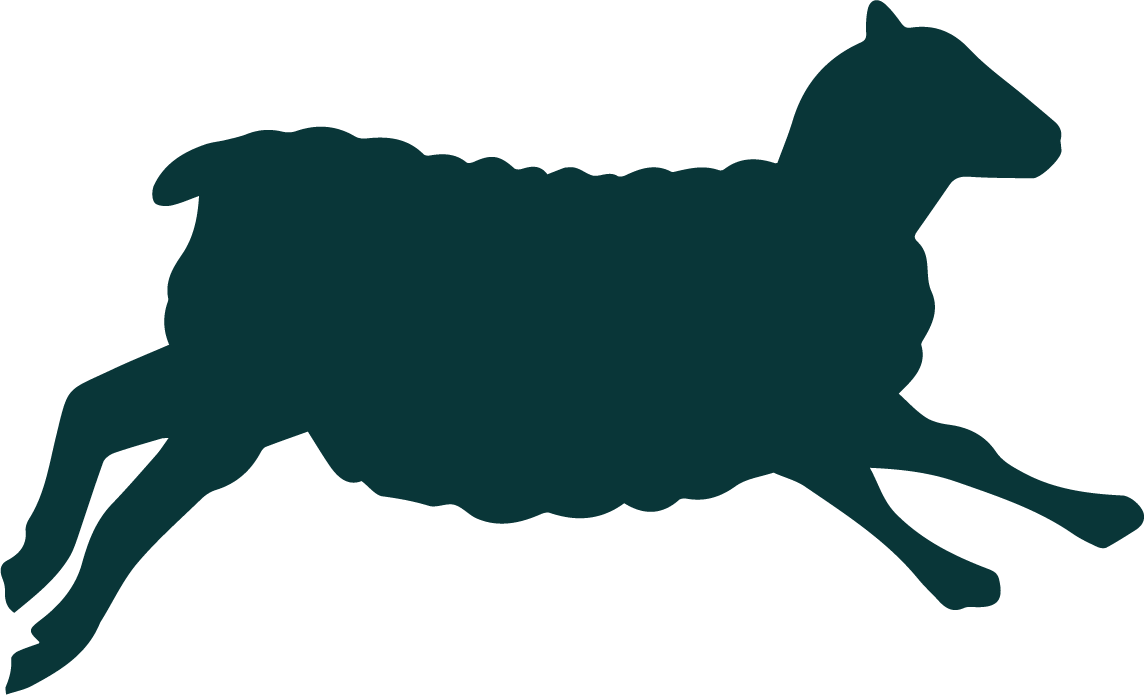Written by Fanny Pascual
The path our beloved clothes travel before reaching our wardrobes is often overlooked, overshadowed by the intimate experience of wearing them on our bodies. The life a garment lives before it meets us is usually quickly forgotten.
When it comes to clothing made from sheep’s wool, a “Made in Canada” label actually reveals very little about the journey the raw material — the wool — has taken before landing in our hands, on our heads, or wrapped around our necks.
So how does this soft, woolly fiber go from the back of a grazing sheep to the finely crafted sweater you’re wearing? The transformation chain of wool is much longer and more complex than we tend to imagine — and understanding it helps bring meaning to terms like local, circular economy, made here, Made in Canada, or traceability, which increasingly resonate with our purchasing decisions.
In truth, wearing a 100% Canadian-made wool garment is a feat — the result of hard work by many experts and passionate individuals. It’s no easy task, especially in an industry largely dominated by synthetic fiber production.
Let’s begin at the source — in the fields.
The first to handle this budding fiber is the farmer, the sheep breeder. In Canada, sheep farming is primarily geared towards lamb meat production, which is currently more profitable than wool. However, whether a flock is raised for meat or wool, all sheep must be sheared — and above all, for their own well-being. Failing to shear a sheep regularly would be considered mistreatment, as the heavy fleece would hinder its movement and health.
The annual shearing, typically in spring, is an intense time on sheep farms. Each sheep passes through the hands of skilled shearers whose precise know-how allows them to quickly remove the fleece without injuring the animal, all while preserving the integrity of the wool. Since wool's value in Canada has significantly decreased over the past decades, many breeders sometimes choose to discard it — even burning it. Choosing to process wool in Canada today remains a risky and often unprofitable endeavor.
Canadian sheep fleeces have a particularity: flocks endure long winters where grazing is impossible — a reality of raising livestock in the North. During this time, the animals are fed hay stored during the summer, served in feeders or inside barns. This hay, however, gets stuck in the fleece and makes wool processing even more challenging, as it contaminates the fiber with bits of straw.
Once the sheep is freed from its fleece — which typically weighs between 3 and 6 kilograms per year — a team sorts the wool to remove the sections too dirty, too contaminated with vegetation, or too short. The raw wool is then packed into large sacks, ready for cleaning.
Washing centers handle the scouring of the fleece — cleaning it in large vats of hot alkaline water to remove impurities and the sheep’s natural wax, known as lanolin. This byproduct is sometimes retained for use in other industries, such as cosmetics and lubricants. At this stage, the fleece loses about 50% of its original weight.
Once cleaned and purified, the wool is sent to a spinning mill, where it is transformed by a series of finely calibrated machines tailored to the type of wool, fiber length, and final product desired. The first step is carding — disentangling, brushing, and aerating the fibers. The washed wool passes through large rollers equipped with fine needles that align the fibers in the same direction. After this stage, the carded wool takes the form of a soft web or sliver, which can already be used for insulation or stuffing.
In this form, the fiber is ready to be spun into a continuous and even thread. By stretching and twisting the carded wool filaments, the spinning machine creates a strong, consistent strand, which can then be twisted with others for added strength. This is where many technical and creative variables come into play — determining the yarn’s thickness, composition, finish, density, texture, twist intensity, and more.
The resulting yarn is wound onto cones, skeins, or balls, then washed again before being sent to the next step: textile fabrication. This is also where the threads may be dyed, unless their natural color is to be preserved.
The textile industry is vast and ever-evolving, but wool yarns are typically used in three main ways: weaving, knitting, and felting. If you look around you right now, most of the textile items in your environment fall into one of these three categories. Sometimes, you have to look closely to tell! The rug in your living room is woven from wool threads, your T-shirt is a cotton knit, and your slippers are made from felted wool — just to name a few examples.
Of course, many key players in the textile production chain have been left out here — from the design team to manufacturing, finishing, and distribution.
All these steps take place in different locations, involving transportation and a carbon footprint that can’t be ignored in a global industry. The abundance of readily available clothing has completely disconnected us from the origin of the textiles touching our skin, and from the intense labor and craft behind transforming raw material into fashion. What’s even more surprising is that, despite all the technological innovations, some of these steps date back more than 10,000 years — and have barely changed.
Creating a wool garment that is raised, processed, and designed in Canada is a true achievement today, especially in the current economic and environmental climate. Wearing a 100% Canadian wool garment doesn’t just mean wearing a durable, natural fiber — it means actively supporting and preserving agricultural, manufacturing, aesthetic, and cultural heritage.
Long live the fleece!


